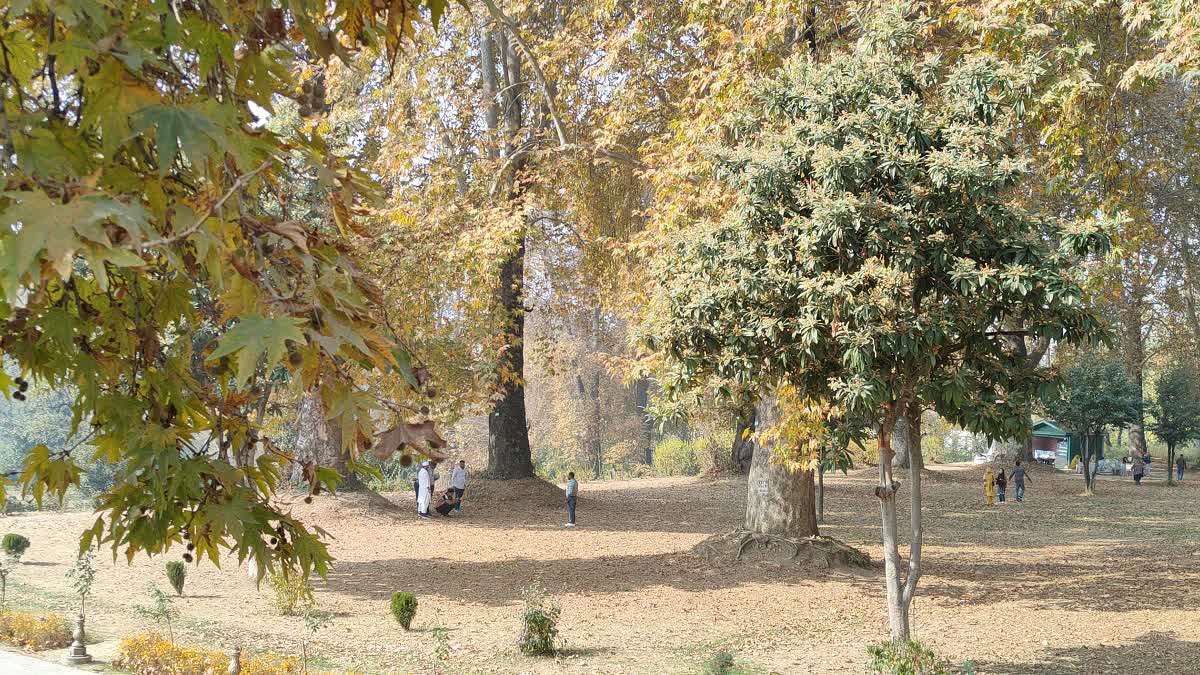Srinagar: The Jammu and Kashmir Forest Department, in collaboration with the J&K Forest Research Institute, has initiated a GIS-based, QR-enabled conservation project for the iconic Chinar trees of Kashmir.
Chinar, the state tree of Jammu and Kashmir, is an indelible part of the region's history, religion, literature, politics, and romance. Its motif is prominently featured in Kashmiri art and craft, particularly in papier-mâché, pottery, shawl embroidery, silverware, and carpet making.
According to officials from the forest department, the initiative aims to protect Chinar trees from threats such as urbanisation, deforestation, and habitat degradation. “The project, spearheaded by the Research Forest Division Srinagar, involves the geotagging and QR coding of Chinar trees to enable precise monitoring and management,” an official stated.
Speaking to ETV Bharat, an official of the Forest Department said that by using digital tools, the project aims to ensure the long-term survival of this heritage tree as the tree holds immense cultural and historical significance for the Kashmir Valley.
"These trees are a living testament to our heritage, but urban expansion and habitat loss have put them at risk. Through this project, we are striving to secure their future,” he said.
“The geotagging process involves mapping the exact locations of Chinar trees across the region. QR codes attached to each tree offer detailed information about its health, age, and growth patterns, enabling researchers and conservationists to track changes over time,” the official explained.
Dr Tariq Bhat, a senior scientist from the J&K Forest Research Institute, remarked that the initiative aimed to create a robust system for monitoring Chinar trees and addressing threats proactively through this process.
“The project also seeks to raise public awareness about the significance of Chinar trees and encourage community participation in their preservation,” he noted.
Chinar, found in almost every village in Kashmir, is also known as the Oriental Plane or Platanus orientalis in scientific nomenclature. Referred to as “Chinar” or “Chenar” in Asia and “Boueen” in Kashmir, it can grow up to 30 meters in height with a girth of 10 to 15 meters at the base. It takes approximately 150 years to reach full size.
According to the forest department's booklet 'In the Shade of Chinar,' Mughal Emperor Akbar planted more than 1,100 Chinar trees at a location called Naseem Bagh beside Dal Lake near Hazratbal. Over the years, many Chinar trees were removed to accommodate infrastructure expansion, while others were affected by disease-causing pests and pathogens, reducing their number from over 1,100 to less than 700.
“In Kashmir, especially in Srinagar, the Chinar tree is so closely identified with the land that as soon as you think of monumental architecture, the Chinar automatically comes to mind,” it states.
“After the arrival of the Mughals, Akbar and Shah Jahan showed keen interest in using Chinars as attractive, shade-bearing landscape trees. The Mughals planted these trees in the famous Mughal Gardens of Kashmir, including Naseem Bagh, Nishat Bagh, Shalimar Garden, and Harwan, as well as in areas like Bijbehara, Budgam, Kokernag, and Anantnag,” it adds.
Read More



